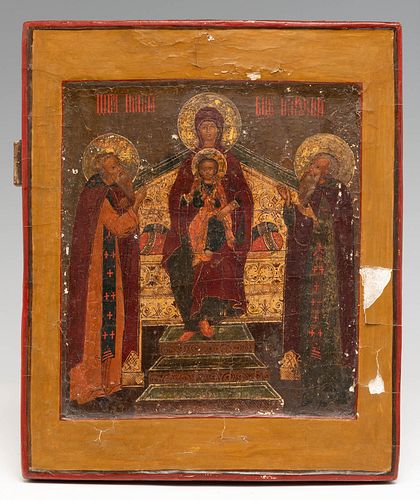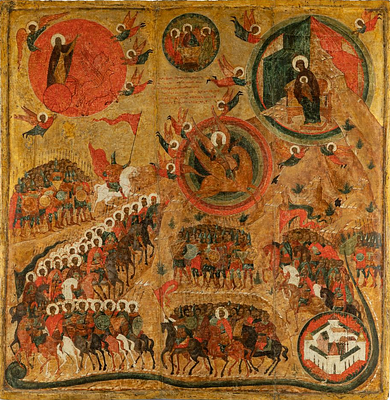Russian school, 18th century. "The Virgin and Child Jesus and selected saints". Tempera on panel.
Lot 42
About Seller
Setdart Auction House
Carrer Aragó 346
Barcelona
Spain
Setdart Subastas was born in 2004 and is currently the first online art auction in Spain with solidity, prestige and reliability guaranteed by our more than 60,000 users. Setdart has a young, dynamic and enterprising team ready to successfully manage the purchase and sale of art works through custom...Read more
Estimate:
EUR€1,200 - EUR€1,500
$1,250 - $1,562.50
Absentee vs Live bid
Two ways to bid:
- Leave a max absentee bid and the platform will bid on your behalf up to your maximum bid during the live auction.
- Bid live during the auction and your bids will be submitted real-time to the auctioneer.
Bid Increments
| Price | Bid Increment |
|---|---|
| EUR€0 | EUR€10 |
| EUR€200 | EUR€25 |
| EUR€500 | EUR€50 |
| EUR€1,000 | EUR€100 |
| EUR€3,000 | EUR€200 |
| EUR€5,000 | EUR€500 |
| EUR€10,000 | EUR€1,000 |
| EUR€20,000 | EUR€2,000 |
| EUR€50,000 | EUR€5,000 |
About Auction
By Setdart Auction House
Sep 23, 2021
Set Reminder
2021-09-23 10:00:00
2021-09-23 10:00:00
America/New_York
Bidsquare
Bidsquare : RUSSIAN ICONS
https://www.bidsquare.com/auctions/setdart-auction-house/russian-icons-7431
Setdart Auction House sofia@setdart.com
Setdart Auction House sofia@setdart.com
- Lot Description
Russian school, 18th century. "The Virgin and Child Jesus and selected saints". Tempera on panel. Measurements: 32 x 27 cm. The icon of interest represents a quite common and popular composition, of the Mother of God seated on the throne, with the selected saints. It follows the traditional model of triangular hierarchical composition, where the seated Virgin is on top, and of bigger size, than the rest of the saints. The two saints next to her are represented in two different postures, the saint on the right holding the gesture of adoration, and the saint on the left raising his right hand in a gesture of blessing. Due to the general deterioration of the piece, the inscriptions, which once rested on the saints' nimbuses, are now practically lost and unrecognisable. As a result, there is some difficulty in determining who these venerable monks are. A particular feature that points to the venerable monks, apart from their clothing, is the Golgotha cross, a typology that is used exclusively on the clothing of Orthodox monks. This type of representation of the seated Virgin and Child is widely known in the Orthodox world under the name "Panachranta", and has similar features to the prototype "Odighitria" in depicting the faces of the Virgin and Child in an embrace, and with the faces side by side. The central image of the auctioned icon features the iconography typical of Panachranta, with the Virgin Mary seated on the throne, holding the Christ Child on her knees. The throne symbolises the majesty and royal power of the Mother of God. This prototype of the Virgin Mary with Child developed in the Byzantine Empire between the 11th and 12th centuries, and has been known in Russia since the 13th century. The background of the Virgin's throne is richly decorated with floral motifs in the Old Russian style. The four eggs on the throne are an interesting symbol, alluding to the future life of the infant Jesus, who is awaiting martyrdom and resurrection. The dark green, almost khaki tone may help to determine the approximate period of the icon's production, which would be the 18th century, when this shade of green began to become popular for the backgrounds of icons.
- Shipping Info
-
In-house shipping available. Please inquire at admin@setdart.com.
-
- Buyer's Premium



 EUR
EUR CAD
CAD AUD
AUD GBP
GBP MXN
MXN HKD
HKD CNY
CNY MYR
MYR SEK
SEK SGD
SGD CHF
CHF THB
THB













